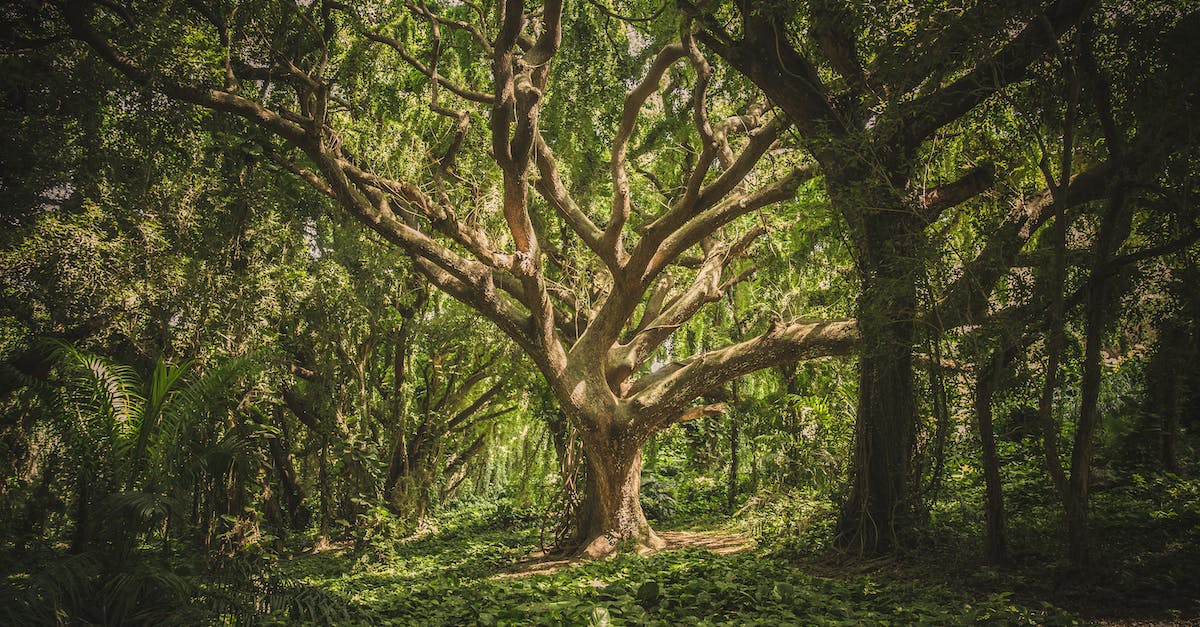Learning how to draw a tree can be a rewarding experience for any artist, whether they are a beginner or an expert. Trees are a fundamental part of the natural world, and being able to capture their essence on paper can bring a sense of tranquility and beauty to any drawing. In this guide, we will walk through the anatomy, texture, outline, and depth of a tree, providing step-by-step tips and techniques to help you create a realistic and stunning tree drawing.
Main Points
- Understanding the anatomy of a tree
- Creating texture and detail in the bark and foliage
- Mastering the outline and shape of a tree
- Adding depth and dimension to your tree drawing

Understanding Tree Anatomy for Realistic Drawings
When it comes to drawing trees, understanding their anatomy is essential for creating realistic and detailed artwork. Whether you’re an aspiring artist or a seasoned illustrator, knowing the key elements of tree structure can greatly enhance the quality of your drawings. Here are some important points to consider:
Branches and Leaves
One of the most crucial elements in tree drawings is capturing the intricate patterns of branches and leaves. Understanding how they grow from the main trunk and their relationship with each other is essential for creating a lifelike representation.
Trunk and Bark
The texture and shape of the trunk and bark vary greatly depending on the type of tree. Pay attention to the details such as the ridges, knots, and colors, as they play a significant role in depicting the true character of the tree.
Root System
The roots are often overlooked in tree drawings, but they are equally important in conveying stability and realism. Depicting the size and spread of the roots can add depth to your artwork.
By understanding and incorporating these key elements into your tree drawings, you can elevate the quality and realism of your artwork. Whether you’re creating a simple sketch or a detailed illustration, paying attention to tree anatomy can truly make a difference in your work.
Mastering Texture Techniques for Drawing Trees
When it comes to drawing trees, mastering texture techniques is essential for creating realistic and captivating illustrations. By learning how to capture the different textures found in tree bark, leaves, and branches, you can elevate your artwork to a new level of skill and detail. In this guide, we will explore easy tree drawing tips and tricks, as well as provide step-by-step instructions on how to sketch trees effectively.
Easy Tree Drawing Guide
Learning to draw trees can seem daunting at first, but with the right guidance and practice, it can become an enjoyable and rewarding skill. By focusing on the fundamental aspects of tree anatomy and texture, you can improve your drawing abilities and create stunning tree illustrations.
Tree Sketching Tips
One of the most important aspects of drawing trees is capturing their unique textures. From the rough and gnarled bark of an old oak tree to the delicate and intricate leaves of a maple tree, each texture requires a specific approach. By utilizing observation and practice, you can develop the skills needed to accurately depict these textures in your drawings.
Learn to Draw Trees
With the right techniques and a bit of patience, anyone can learn to draw trees with confidence. By utilizing shading, hatching, and other texture techniques, you can bring your tree drawings to life and create stunning works of art. Through dedication and perseverance, you can master the art of drawing trees and take your illustrations to a new level of detail and realism.
Creating Dimension and Depth in Tree Drawings
When it comes to drawing realistic trees, it’s important to pay attention to detail, perspective, and shading. By incorporating these three key elements into your tree drawings, you can create a sense of dimension and depth that brings your artwork to life.
Start by sketching the basic shape of the tree trunk and branches, paying attention to the angle and direction of each limb. Then, use different shades of green to add depth to the leaves and foliage, emphasizing the play of light and shadow. Finally, consider the surrounding environment and how it influences the overall composition of the tree.
Key Takeaways:
1. Detail: Pay attention to the intricate details of the tree, including the texture of the bark and the delicate patterns of the leaves.
2. Perspective: Consider the viewpoint of the viewer and how it impacts the portrayal of the tree’s dimensions.
3. Shading: Use a combination of light and dark tones to create contrast and give the tree a sense of volume and depth.
The Art of Outlining Trees in Drawings
Adding trees to your drawings can bring them to life and create a sense of depth and realism. One of the key techniques for creating lifelike trees in drawings is the art of outlining. By carefully outlining the shape of the tree, including its trunk, branches, and foliage, you can add detail and dimension to your artwork.
Techniques for Outlining Trees
There are several techniques that can be used to outline trees in drawings:
- Observation: Study real trees to understand their structure and form. Pay attention to the way branches extend from the trunk and how the foliage is distributed.
- Use of Lines: Experiment with different types of lines to create the desired texture and form. Thin, delicate lines can represent fine branches, while thicker, darker lines can denote the trunk.
- Layering: Build up the outline of the tree in layers, starting with the basic shape and gradually adding detail to the branches and foliage.
By mastering the art of outlining trees in drawings, you can elevate the quality of your artwork and create stunning, realistic natural scenes.
Enhancing Realism: Adding Shadows and Highlights to Tree Drawings
One of the most effective ways to enhance the realism of tree drawings is by adding shadows and highlights. By incorporating these elements, artists can create a more three-dimensional effect, making their drawings come to life. Shadows provide depth and dimension, while highlights add a sense of light and texture to the foliage. Using a combination of these techniques, artists can create visually stunning and lifelike tree drawings that captivate the viewer.
Adding Shadows
When adding shadows to tree drawings, it’s essential to consider the direction of light source and the placement of the objects. By carefully studying the way the light falls on the trees, artists can accurately portray the shadows they cast. This attention to detail creates a sense of realism and depth in the drawing, making it more visually compelling.
Highlighting Techniques
Highlights are another crucial element in creating realistic tree drawings. By using techniques such as stippling or cross-hatching, artists can convey the texture and patterns of light on the foliage. This adds a sense of movement and vibrancy to the drawing, making it visually engaging and dynamic.
Capturing the Essence: Tips for Drawing Trees with Personality
When it comes to drawing trees, the key is to capture their essence and personality. To achieve this, attention to detail and careful observation are essential. Here are a few tips to help you bring out the personality of trees in your drawings:
1. Study their Shapes and Textures
Before you start drawing, take the time to study the shapes and textures of different tree species. Pay attention to their unique characteristics and try to incorporate them into your drawings.
2. Emphasize their Gestures
Trees have a natural flow and movement that can convey a sense of character. Focus on capturing the gestures of trees, such as the way their branches reach out or how they sway in the wind.
3. Add Details that Tell a Story
Think about the life experiences of the trees and add details that tell a story. Whether it’s a gnarled trunk or a cluster of leaves, these details can add depth and personality to your drawings.
“Drawing trees is a way of bringing out their unique personalities and capturing the spirit of nature.” – John Ruskin
In conclusion, drawing trees with personality is all about understanding their essence and infusing your artwork with their unique traits. Remember to study their shapes, emphasize their gestures, and add details that tell a story. By doing so, you can create drawings that truly capture the spirit of trees.


perferendis ipsa est in nemo nemo optio repellendus maxime aliquam odit. et illum modi ut et delectus vero optio. sed odit et quasi veritatis autem. autem molestias eos temporibus sed saepe ullam odio non aut reiciendis incidunt eum architecto quia eveniet aut commodi.
natus reiciendis libero recusandae alias fugit ut omnis doloremque id. eum et possimus itaque sint eos voluptas est nulla tempore ut autem et enim dolores quae voluptatem eveniet ratione. maxime harum quas delectus labore iste est perspiciatis cumque aperiam quis sint odit. dolore quos sed consectetur et quidem omnis hic mollitia nam totam eum et veritatis rerum quod non dolor dolorem quas. qui omnis et est nesciunt reprehenderit alias qui et repellendus a non quibusdam.